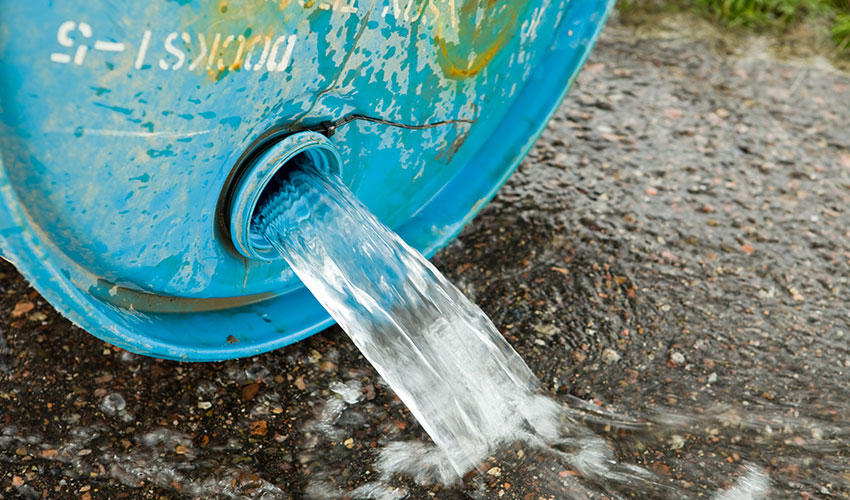5 questions to help you assess environmental risk

Globalisation offers businesses of all sizes potential operational benefits and opportunities to expand, but it can also be a source of new and different types of risks. Notably, man-made environmental disasters are a top-10 global risk in terms of both likelihood and impact, according to the World Economic Forum’s Global Risks Report 2019. So it’s more important than ever to take adequate steps to evaluate your company’s environmental risks and establish a customised insurance program to minimise the impact of pollution and environmental damage.
Depending on the nature and geographic reach of your business, managing environmental risk can be a highly complex task. To help you get started in evaluating and strengthening your environmental insurance and services, here are five questions to ask yourself.
-
Do you have gaps in your existing coverage that expose your company to environmental claims?
Your company’s general liability insurance may cover a sudden, one-time incident that releases pollution into the environment, but may leave you without protection for gradual environmental damage. Dedicated environmental risk coverage can help close this gap, as it is often structured to provide insurance protection for long-term pollution and contamination potentially even if caused by a previous owner or tenant, as well as defence of associated regulatory actions.
-
Where is your company most likely to have an environment claim?
While a comprehensive environmental risk program should cover all your facilities, you should also evaluate where you may face the greatest risks. Which operations have the potential to cause environmental damage and which regional regulations pose compliance risks?
-
What are the most stringent environmental regulations your business faces—including minimum insurance levels?
Environmental compliance requirements vary widely across the globe, as do minimum mandated insurance levels for environmental damage. Furthermore, the failure to meet requirements in one region can also have financial, operational, and reputational consequences elsewhere. Understanding local operational rules is critical to remaining compliant worldwide. Make sure your insurer can provide deep and wide geographic expertise, including on-the-ground local specialists to help you meet regional compliance and insurance requirements.
-
Is your company exposed to legacy contamination liability?
It’s important to learn about the historic use of your sites and facilities—so you can identify potential contamination caused by a previous owner. Your environmental risk management program should account for the fact your business could be held liable for such legacy contamination.
-
Does your insurer offer crisis management support as part of its services?
Today’s 24/7 news coverage and social media can amplify the impact of environmental disasters. When an environmental disaster occurs, your company must often do more than just address actual damage to the environment. You must also take steps to contain damage to your reputation—even if the environmental harm was caused by another party. If your business faces environmental risks, it should prepare and regularly update a crisis management plan that includes steps to respond to damage, protect your reputation, and ensure business continuity. Consider seeking out an insurer that supports crisis management planning and operations.

The value of incident prevention
Reducing damage, minimising costs, and managing claims after an incident has occurred are just part of any comprehensive environmental loss-control program. The most important step is to evaluate your operations, analyse specific projects, and determine actions that can reduce environmental risks. Find an insurance company that can help you understand local environmental regulations and provide access to engineers and other experts to strengthen your ability to prevent environmental damage in the first place.
This content is brought to you by Chubb Insurance Australia Limited (“Chubb”) as a convenience to readers and is not intended to constitute advice (professional or otherwise) or recommendations upon which a reader may rely. Any references to insurance cover are general in nature only and may not suit your particular circumstances. Chubb does not take into account your personal objectives, financial situation or needs and any insurance cover referred to is subject to the terms, conditions and exclusions set out in the relevant policy wording. Please obtain and read carefully the relevant insurance policy before deciding to acquire any insurance product. A policy wording can be obtained at www.chubb.com/au, through your broker or by contacting any of the Chubb offices. Chubb makes no warranty or guarantee about the accuracy, completeness, or adequacy of the content. Readers relying on any content do so at their own risk. It is the responsibility of the reader to evaluate the quality and accuracy of the content. Reference in this content (if any) to any specific commercial product, process, or service, and links from this content to other third party websites, do not constitute or imply an endorsement or recommendation by Chubb and shall not be used for advertising or service/product endorsement purposes. ©2020 Chubb Insurance Australia Limited ABN: 23 001 642 020 AFSL: 239687. Chubb®, its logos, and Chubb.Insured.SM are protected trademarks of Chubb.

Have questions?
Contact a broker today.